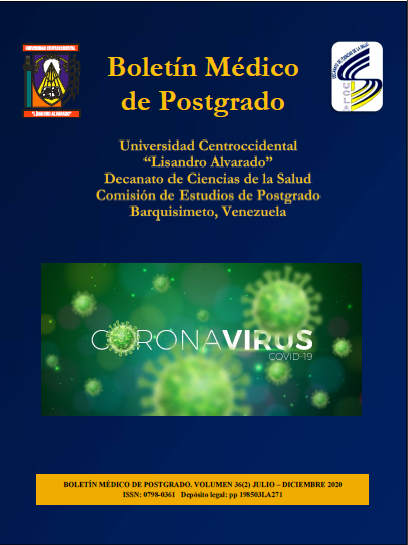Giant hydronephrosis: two clinical cases with different ethiologies
Keywords:
giant hydronephrosis, etiology, CT scan, ureteropelvic junction, nephrectomyAbstract
Giant hydronephrosis is considered a rare entity, characterized by the presence of at least 1 liter of fluid within the pielocalicial system; is more frequent in males and often asymptomatic. We present an 85-year-old female patient who has a 6-year complain of left lumbar pain associated with increase in abdominal circumference. On CT scan, a giant left hydronephrotic pouch is evidenced, with a thinned renal wall that does not concentrate or eliminate contrast. We present a 61 year-old male who refers a 5-year asymptomatic increase in abdominal circumference. The CT scan reveals significant dilatation of the kidney and right collecting system secondary to ureteral lithiasis. Both patients undergo simple nephrectomy. The most frequent etiology of giant hydronephrosis is ureteropelvic junction stenosis followed by lithiasic and tumor pathology. It is important to consider this entity as a differential diagnosis in the case of abdominal cystic masses.
Downloads
References
Hu G, Luo M, Xu Y. Giant hydronephrosis secondary to ureteropelvic junction obstruction in adults: report of a case and review of literatures. Int J Clin Exp Med 2015; 8(3):4715-4717.
Molina R. Hidronefrosis terminal gigante. Arch Esp Urol 2010; 63 (10): 886.
Guia R, Pacheco A, Uzcategui W, Muiño M, Araez M, Turiaf M. Hidronefrosis gigante a consecuencia de estenosis de la unión ureteropelvica. Revista de la Facultad de Ciencias de la Salud 2009; 13(2).
Kawaljit S. Giant hydronephrosis: still a reality! Turk J Urol 2017; 43(3): 337-44.
Mediavilla E. About a case report of giant hydronephrosis. Case Reports in Urology 2013; 1(3).
Published
How to Cite
Issue
Section
Las opiniones expresadas por los autores no necesariamente reflejan la postura del editor de la publicación ni de la UCLA. Se autoriza la reproducción total o parcial de los textos aquí publicados, siempre y cuando se cite la fuente completa y la dirección electrónica de esta revista. Los autores(as) tienen el derecho de utilizar sus artículos para cualquier propósito siempre y cuando se realice sin fines de lucro. Los autores(as) pueden publicar en internet o cualquier otro medio la versión final aprobada de su trabajo, luego que esta ha sido publicada en esta revista.



